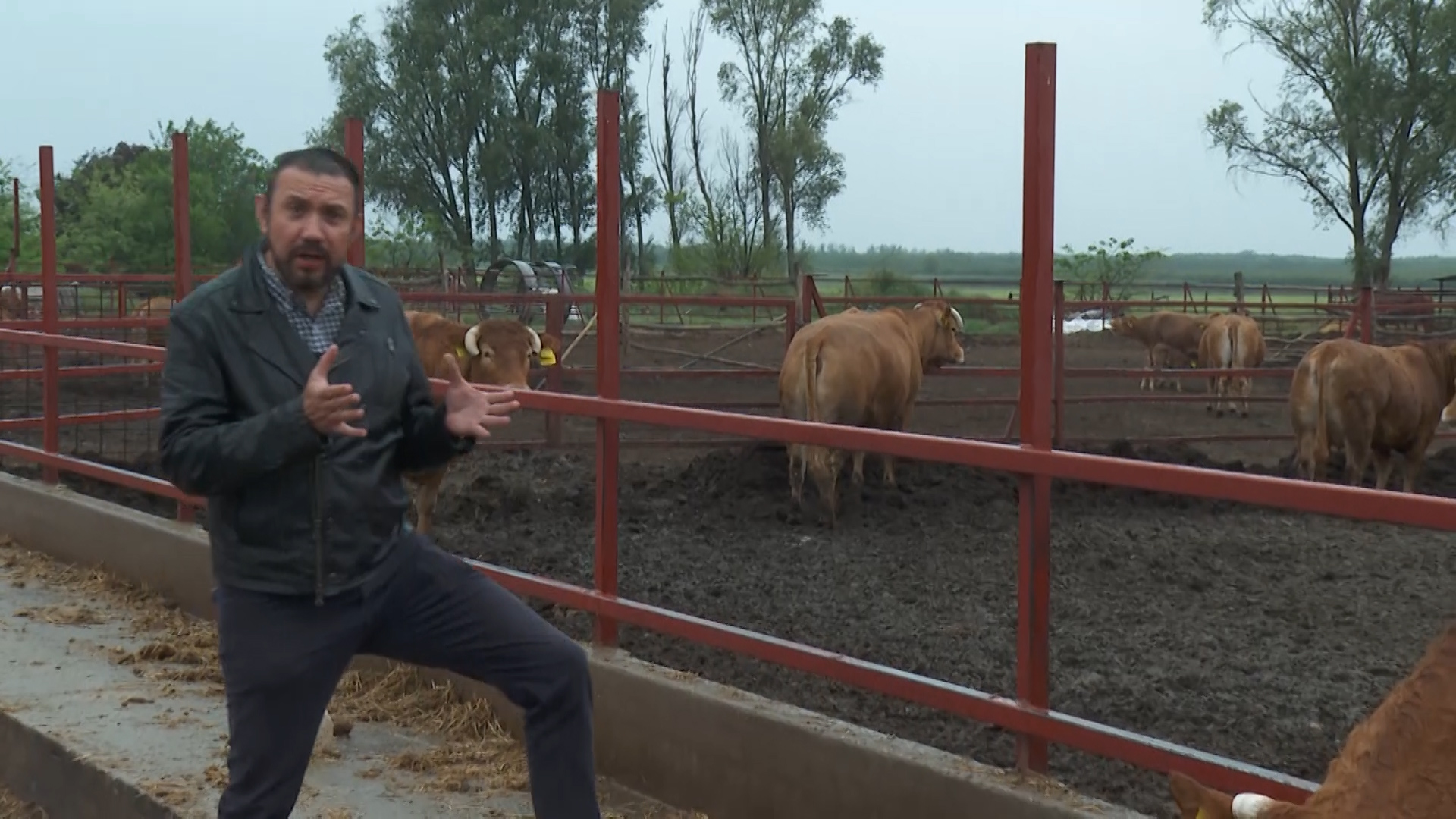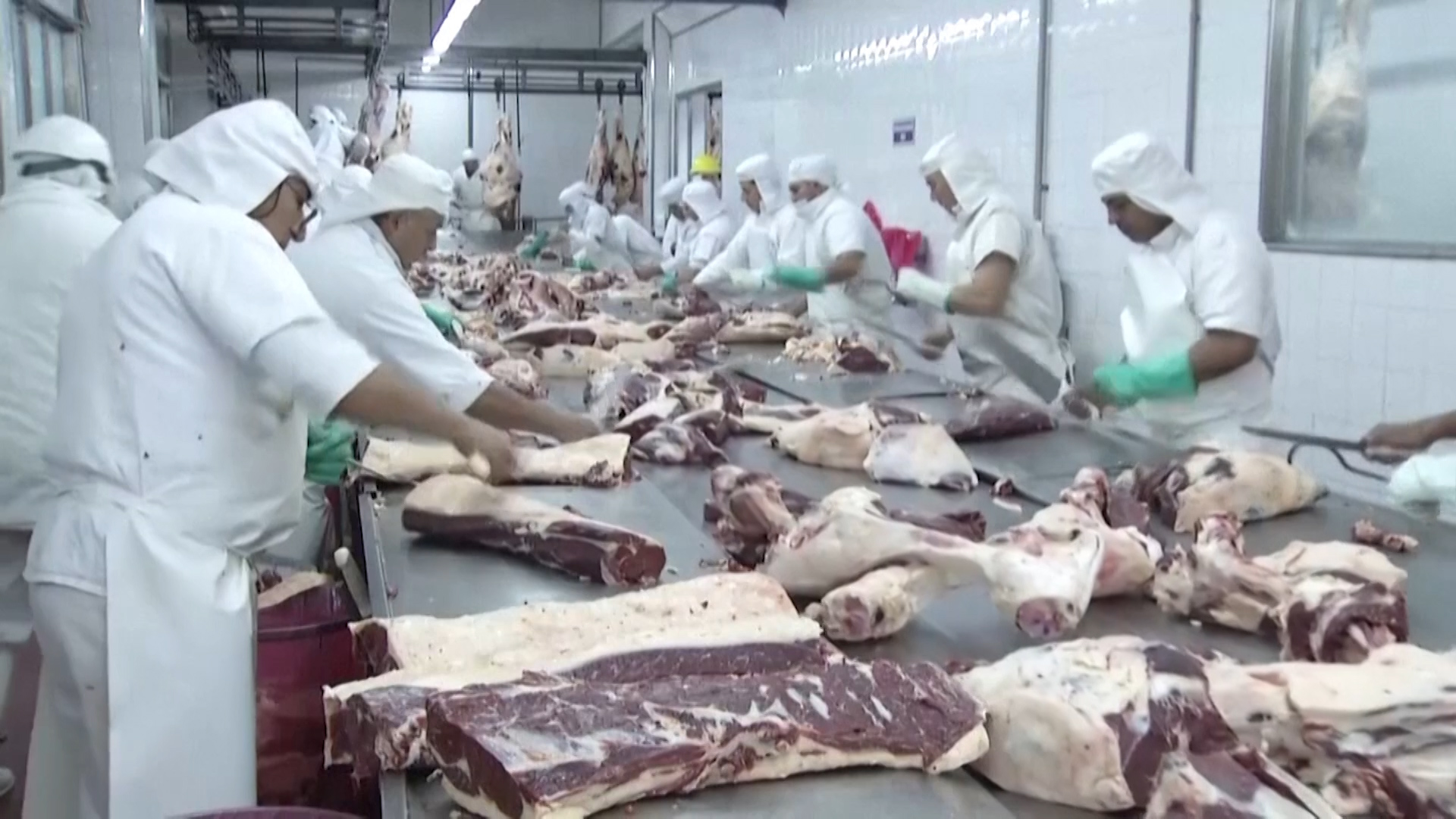
Pablo Gutierrez visited a Hungarian ranch to explore the beef trade./ CGTN Europe
Pablo Gutierrez visited a Hungarian ranch to explore the beef trade./ CGTN Europe
Hungarian beef producers say exports of red meat to China are at an all-time high.
China agreed to allow Hungarian red meat producers to tap into the Chinese market in 2016, and beef export companies are eager to continue expanding their trade relationships.
For many, the Ningbo Central and Eastern European Expo in Zhejiang province will be the perfect occasion to showcase Hungarian beef.
It all starts in the Hungarian ranches, where blonde d'Aquitaine cattle are bred under the highest standards. "Blondes," as farmers typically call them, can weigh up to 900 kilograms when fully mature, more than many other species.
That's important for beef traders, who say the carcasses, when butchered, contain more meat enabling them to produce higher quality meat cuts.
"We can satisfy our Chinese customers' demands," said Janos Hajdu, general manager of HUS Zsijet. "There are unique cuts they request. Sometimes they want a certain amount of fat left on the bones or cuts that are different from those requested in Europe, we can provide that."

Chinese consumers are attracted to Hungary's well-fed cattle and prime cuts./ CGTN Europe
Chinese consumers are attracted to Hungary's well-fed cattle and prime cuts./ CGTN Europe
Janos Hajdu is the general manager of one of Hungary's producers licensed to export red meat to China. He says trade has boomed since Budapest and Beijing signed an agreement in 2016.
"Every year, we double our exports. This year we are on course to deliver 100 containers of beef to China," said Hajdu.
Despite the sales boom, Hajdu says the Chinese market has huge growth potential, which is why he is leading a delegation of meat producers from Hungary on their first visit to the Central and Eastern European Expo in Ningbo.
Well-fed Hungarian cattle and quality cuts are proving popular in China, but currently, only three slaughterhouses have the necessary permits to export their products to China. Beef producers hope to catch up with the high demand.
All this comes amid a global rise in beef trade, with increasing Chinese demand for red meat products.
Last year, the Chinese market imported 2.7 million tons of beef, 40 percent of which came from Brazil. However, a recent outbreak of disease forced Beijing to ban the import of red meat from the country.
Beef industry insiders say that the ban helped Hungary, China's largest European beef supplier, shore up sales.
"China is one of the world's most important trading countries and a significant trading partner for Hungary," said Márton Szücs, breeding manager of the Hungarian Limousin and Blonde d'Aquitaine Association of Breeders.
"If we meet all their requirements, they can buy large quantities."
The expo brings new opportunities to grow sales for Hajdu's beef company. Six months ago, the company opened a new facility outside Budapest to handle the demand. He expects to sign a new $14 million export contract when the event ends.
"This partnership with China is essential to us," said Hajdu. "It's allowed us to create more jobs at the slaughterhouse and increase our production. That is why we expanded our refrigeration capacities. We are ready to contribute much more to the Hungarian beef exports."
Hungary's beef trade with China is searing hot with no signs of cooling down.

Subscribe to Storyboard: A weekly newsletter bringing you the best of CGTN every Friday